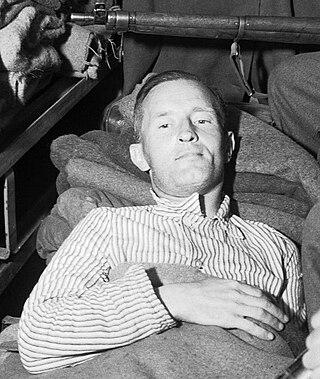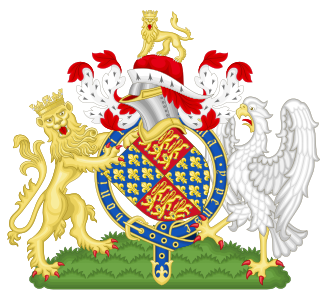
Under the law of the United Kingdom, high treason is the crime of disloyalty to the Crown. Offences constituting high treason include plotting the murder of the sovereign; committing adultery with the sovereign's consort, with the sovereign's eldest unmarried daughter, or with the wife of the heir to the throne; levying war against the sovereign and adhering to the sovereign's enemies, giving them aid or comfort; and attempting to undermine the lawfully established line of succession. Several other crimes have historically been categorised as high treason, including counterfeiting money and being a Catholic priest.
A hybrid offence, dual offence, Crown option offence, dual procedure offence, offence triable either way, or wobbler is one of the special class offences in the common law jurisdictions where the case may be prosecuted either summarily or on indictment. In the United States, an alternative misdemeanor/felony offense lists both county jail and state prison as possible punishment, for example, theft. Similarly, a wobblette is a crime that can be charged either as a misdemeanor or an infraction, for example, in California, violating COVID-19 safety precautions.

The Treason Act 1351 is an Act of the Parliament of England wherethrough, according to William Blackstone, common law treason offences were enumerated and no new offences were, by statute, created. It is one of the earliest English statutes still in force, although it has been very significantly amended. It was extended to Ireland in 1495 and to Scotland in 1708. The Act was passed at Westminster in the Hilary term of 1351, in the 25th year of the reign of Edward III and was entitled "A Declaration which Offences shall be adjudged Treason". It was passed to clarify precisely what was treason, as the definition under common law had been expanded rapidly by the courts until its scope was controversially wide. The Act was last used to prosecute William Joyce in 1945 for collaborating with Germany in World War II.
Uttering is a crime involving a person with the intent to defraud that knowingly sells, publishes or passes a forged or counterfeited document. More specifically, forgery creates a falsified document and uttering is the act of knowingly passing on or using the forged document.

The Offences against the Person Act 1861 is an Act of the Parliament of the United Kingdom of Great Britain and Ireland. It consolidated provisions related to offences against the person from a number of earlier statutes into a single Act. For the most part these provisions were, according to the draftsman of the Act, incorporated with little or no variation in their phraseology. It is one of a group of Acts sometimes referred to as the Criminal Law Consolidation Acts 1861. It was passed with the object of simplifying the law. It is essentially a revised version of an earlier consolidation act, the Offences Against the Person Act 1828, incorporating subsequent statutes.

The Malicious Damage Act 1861 is an Act of the Parliament of the United Kingdom of Great Britain and Ireland. It consolidated provisions related to malicious damage from a number of earlier statutes into a single Act. For the most part these provisions were, according to the draftsman of the Act, incorporated with little or no variation in their phraseology. It is one of a group of Acts sometimes referred to as the Criminal Law Consolidation Acts 1861. It was passed with the object of simplifying the law. It is essentially a revised version of an earlier consolidation Act, the Malicious Injuries to Property Act 1827, incorporating subsequent statutes.

The Official Secrets Act 1989 is an Act of the Parliament of the United Kingdom that repeals and replaces section 2 of the Official Secrets Act 1911, thereby removing the public interest defence created by that section.

The Criminal Law Act 1977 is an act of the Parliament of the United Kingdom. Most of it only applies to England and Wales. It creates the offence of conspiracy in English law. It also created offences concerned with criminal trespass in premises, made changes to sentencing, and created an offence of falsely reporting the existence of a bomb.
Obtaining pecuniary advantage by deception was formerly a statutory offence in England and Wales and Northern Ireland. It was replaced with the more general offence of fraud by the Fraud Act 2006. The offence still subsists in certain other common law jurisdictions which have copied the English criminal model.

The Infanticide Act 1938 is an Act of the Parliament of the United Kingdom. It creates the offence of infanticide for England and Wales.
Burglary is a statutory offence in England and Wales.

The Indictments Act 1915 is an Act of the Parliament of the United Kingdom that made significant changes to the law relating to indictments. The law relating to indictments evolved during the seventeenth and eighteenth centuries and became lengthy, confusing and highly technical to the point where some barristers specialised entirely in drawing up indictments. During the nineteenth century several Acts were passed by Parliament to correct this problem, but none were entirely successful. In 1913 Lord Haldane created a committee to draw up a draft bill reforming the law of indictments, which became the Indictments Act 1915.

The Forgery Act 1861 is an act of the Parliament of the United Kingdom of Great Britain and Ireland. It consolidated provisions related to forgery from a number of earlier statutes into a single Act. For the most part these provisions were, according to the draftsman of the Act, incorporated with little or no variation in their phraseology. It is one of a group of acts sometimes referred to as the Criminal Law Consolidation Acts 1861. It was passed with the object of simplifying the law. It is essentially a revised version of an earlier consolidation act, the Forgery Act 1830, incorporating subsequent statutes.

The Forgery and Counterfeiting Act 1981 is an Act of the Parliament of the United Kingdom which makes it illegal to make fake versions of many things, including legal documents, contracts, audio and visual recordings, and money of the United Kingdom and certain protected coins. It replaces the Forgery Act 1913, the Coinage Offences Act 1936 and parts of the Forgery Act 1861. It implements recommendations made by the Law Commission in their report on forgery and counterfeit currency.

The Forgery Act 1913 was an Act of the Parliament of the United Kingdom. It provided a definition of forgery and created several offences of forgery and uttering, while repealing numerous other offences of forgery, thereby consolidating the law of forgery. It did not extend to Scotland.
Coinage Offences Act is a stock short title used for legislation in New Zealand and the United Kingdom which relates to coinage offences.

The Magistrates' Courts Act 1952 was an Act of the Parliament of the United Kingdom which related to magistrates' courts. It was repealed by section 154 of, and Schedule 9 to, the Magistrates' Courts Act 1980.
Assault with intent to resist arrest is a statutory offence of aggravated assault in England and Wales and Northern Ireland and the Republic of Ireland.

The Perjury Act 1911 is an act of the Parliament of the United Kingdom. It creates the offence of perjury and a number of similar offences.

The Coinage Offences Act 1861 was an Act of the Parliament of the United Kingdom which codified various coinage offences. It was repealed and replaced by the Coinage Offences Act 1936.





